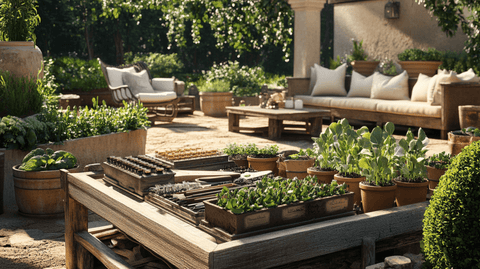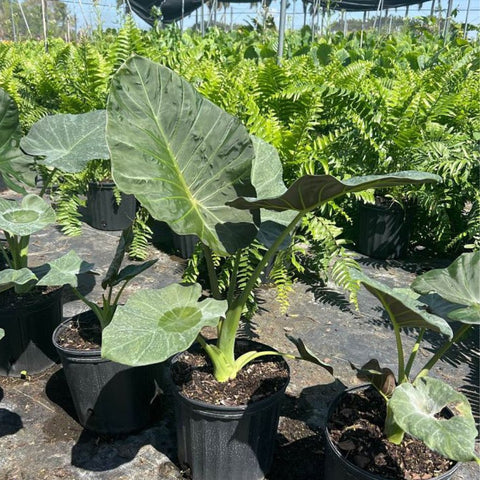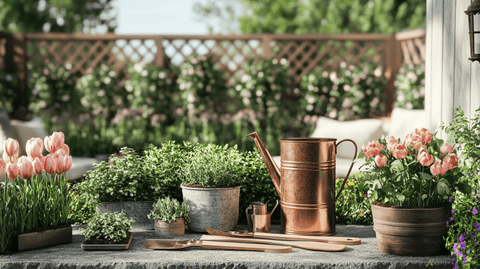Introduction: Understanding the Ancient Wisdom of Planting
Ever wondered how your grandparents always seemed to know the perfect time to plant? It's not just luck or a sixth sense—many generations have relied on the Farmers' Almanac for guidance. This compendium of age-old wisdom combines calendars, weather forecasts, and planting charts, making it an invaluable tool for gardeners and farmers alike. By aligning planting activities with nature's cycles, it maximizes the potential for growth and yield.

What is the Farmers' Almanac?
History and Origins of the Farmers' Almanac
The Farmers' Almanac has been around since 1818, providing weather predictions, astronomical data, and farming tips to its loyal readership. Created by David Young and Samuel H. Banta, this publication has stood the test of time, adapting to changes while maintaining its core essence. Over the centuries, it has become a trusted resource, lauded for its ability to forecast weather patterns and guide planting dates with uncanny accuracy.
Explanation of Its Purpose and Heritage
The purpose of the Farmers' Almanac extends beyond mere weather forecasting. It serves as a guide for various farming activities by offering advice on everything from planting crops to harvesting them. With a wealth of information, including zodiac influences and seasonal advice, it effectively bridges the gap between humanity and the rhythms of nature.
The Science Behind the Best Days to Plant
Understanding Nature’s Cycles
The key to the Farmers' Almanac's Best Days to Plant lies in understanding that planting isn't just an act of putting seeds in soil; it's about doing so at the right time to harness natural energies. The interplay between lunar cycles and plant growth is pivotal, with the moon's gravitational pull influencing water and sap movement within plants, much like ocean tides.

The Role of Lunar Phases in Plant Growth
The moon is more than a night-time companion; its phases play a significant role in plant growth. During the waxing phase, when the moon is increasing in light, it's ideal for planting crops that grow above ground, like our own Agapanthus Lily of the Nile Blue. Conversely, the waning phase, when the moon decreases after fullness, is suitable for root crops and perennials.
The Best Days to Plant According to the Almanac
How to Interpret the Almanac’s Chart
Interpreting the Farmers' Almanac can feel daunting at first, but it becomes intuitive with practice. The planting chart typically aligns with the moon's phases and zodiac signs, recommending specific days for sowing seeds, transplanting, pruning, and weeding. The Almanac integrates these astrological insights with practical advice for best results.
Practical Application of the Best Days
Consider planning your garden using these guidelines. For instance, planting leafy vegetables and trees during a waxing crescent can enhance growth, while pruning during a waning gibbous phase can discourage disease and pests. Explore our variety of trees, such as the Alexander Palm, and plan your planting for optimal growth and health.
Integrating Farmers' Almanac Wisdom into Modern Gardening
Balancing Tradition with Modern Techniques
Today's gardening enthusiasts are blending time-honored practices with modern methodologies, leading to impressive results. Using the Farmers' Almanac can complement scientific advances in horticulture, such as using sustainable fertilizers and advanced irrigation systems, to maximize garden efficiency.

Catering to Different Climate Zones
The tips provided by the Farmers' Almanac are versatile across various climate zones. For example, planting succulents like our Agave Blue might follow a slightly modified schedule, taking into account the unique climatic challenges posed by drought-prone regions.
Case Studies: Success Stories from Almanac Users
Real-life Examples of Prosperous Plantings
Take, for instance, a community garden in Vermont, which reported a 30% increase in yield when following the Almanac's suggested planting days compared to their traditional methods. Their secret? Timing transplanting and seeding with moon cycles and optimal watering techniques.
Testimonials from Plantologists
At Plantology, we've heard countless success stories from customers who have made their gardening experiences more fruitful by following the Almanac. A customer reported a significantly higher success rate of her Adonidia Palm Double after aligning planting with moon phases, transforming her patio space into a lush oasis.
Choosing the Right Plants for Your Garden
Selecting Based on Your Environment
Choosing plants that thrive in your local environment is crucial. Consider your area's climate and soil when selecting plants. Tropical varieties may perform well in warmer regions, while succulents may be better suited for arid climates. Explore our range, including the durable Caribbean Agave, to find options that fit your locality.

Factoring in Seasonal Preferences
Each plant species has optimal planting seasons. While some might prefer the warmth of summer, others rely on the cool of spring or fall. With the help of the Almanac, determining the best time to introduce our diverse plant selections, such as Aglaonema Silver Bay, becomes straightforward.
Tools and Resources for Almanac-Based Planning
Digital Resources and Apps
Today's tech-savvy gardeners can access numerous apps inspired by the Farmers' Almanac's principles. These tools allow easy tracking of lunar cycles, planting schedules, and even automate reminders for planting activities.
Accessing Plantology's Expertise and Products
For even more personalized advice, Plantology offers expert consultations to help you align your gardening plans with Almanac wisdom. Discover our wide selection of plants tailored to a spectrum of environments and needs.
Conclusion: Embarking on Your Gardening Journey
As our understanding of the environment grows, so does the appreciation of ancient wisdom passed down through generations. The Farmers' Almanac continues to be an asset, intricately guiding us through the process of planting, nurturing, and harvesting. With products that cater to every unique gardening aspiration, Plantology is here to accompany you on this green journey. Whether you're planting your first seed or expanding a flourishing landscape, aligning with nature's cycles not only enhances the aesthetic and health of your garden but enriches your own connection with the earth.

Start your journey with the confidence of wisdom and exceptional quality from Plantology. Visit our website today to explore our curated collections of plants and make your garden a thriving testament to nature's efficacy.
Exploring the Depths of Planting Wisdom
The Influence of Astrology in Gardening
Beyond the cycle of the moon, astrology itself has played a notable role in shaping ancient planting practices. Various astrological signs dictate optimal planting and harvesting times, open a unique perspective into how celestial movements can impact terrestrial life. For example, root crops are said to fare better when planted under Capricorn or Taurus, signs associated with stability and growth.
Astrological gardens are a fascinating concept where plants are cultivated based on zodiac signs, resulting in a diverse botanical collection that honors cosmic influences. This practice showcases the historical belief that stars and planets possess energies that resonate with specific plant behaviors.
Calendrical Systems and Their Agricultural Significance
Ancient cultures had their own calendrical systems that guided agricultural activities. The Mayans were known for their intricate calendars that detailed not only religious events but also strategic agricultural periods. Similarly, the Egyptian calendar, interwoven with the Nile's flooding cycle, was crucial for ensuring food security.
These calendars were not just about dates but encapsulated knowledge and wisdom acquired over generations, emphasizing the interconnectivity of timekeeping and agriculture. Such historical insights continue to inform modern iterations of almanacs, enriching our understanding of optimal agricultural timing.

Modern Gardening Practices Enriched by Ancient Wisdom
Permaculture and the Almanac
Permaculture integrates naturally with the principles outlined in the Farmers' Almanac, promoting sustainable living by observing natural ecosystems. Key permaculture principles, such as observing and interacting, are parallel to the field-tested advice from the Almanac. The recognition of natural patterns leads to the creation of gardens that are resilient and productive.
A permaculture-inspired gardener might incorporate circular planting patterns that mimic the moon's phases, or design water irrigation systems that efficiently utilize gravitational pull like tides. Combining these designs with the Almanac's guidelines offers a holistic approach to gardening.
Integrating Technology into Almanac-Based Practices
The digital age has opened new dimensions in how Farmers' Almanac wisdom can be accessed and utilized. Applications and software tools now track lunar cycles, offering push notifications for planting and provide augmented reality interfaces to visualize plant growth over time.
These technologies are enabling farmers to incorporate detailed metrics and data analytics into their practices. By measuring soil quality, moisture levels, and plant health, there's a fusion of tradition with innovation, creating more efficient and scientifically-grounded gardening strategies.

Broader Impact of Almanac-Based Gardening
Environmental Benefits
Aligning with natural cycles reduces the need for artificial interventions, significantly cutting down the use of fertilizers and pesticides. This sustainable approach promotes biodiversity, enhances soil health, and contributes positively to the local ecology.
Moreover, xeriscaping, a strategy designed to minimize water use by planting drought-resistant species during moon phases that enhance root water uptake, conserves resources. These efforts reflect the growing alignment between traditional practices and environmental stewardship.
Community and Cultural Revival
Embracing the Farmers' Almanac within community gardens has seen a resurgence in communal agricultural endeavors, reminiscent of past village traditions. This revival encourages cultural heritage preservation and strengthens community bonds through shared gardening projects.
Events like planting festivals, workshops, and shared harvest feasts are integrating almanac knowledge into contemporary culture, creating vibrant and engaged gardening communities that thrive on shared successes and learning experiences.
Further Resources and Learning Opportunities
Gardening Workshops and Courses
For those interested in deepening their understanding of planting wisdom, numerous workshops and online courses are available. These resources often cover almanac interpretation, sustainable practices, and innovative garden design, blending theory with hands-on practice.

Organizations offer certifications in biodynamic farming, an area greatly influenced by lunar planting techniques, providing gardeners with a holistic framework to manage farm ecosystems responsibly and efficiently.
Books and Publications
A plethora of literature exists that expands on the themes initiated by the Farmers' Almanac. Titles like "The Lunar Garden" and "Astrology for Gardeners" delve into the rich overlap of astrology, gardening, and ecological consciousness.
Such publications not only serve as practical guides but also enrich the reader's appreciation for the dizzying complexities of the natural world and the elegant dance of celestial bodies that influence our gardens.
Conclusion: Embracing Holistic Gardening Practices
Embarking on a gardening journey respecting the wisdom of the Farmers' Almanac enables a reconnection with nature. As adventurers in our own backyards, we become custodians of a greater ecological balance, promoting not just the health of our gardens but fostering a profound appreciation for the interconnectedness of life.

With Plantology's support, the path to a more intuitive and successful gardening experience is within reach. Visit Plantology and discover how integrating ancient practices with modern innovations can lead to beautiful, productive, and sustainable gardens. Whether for personal enjoyment, culinary adventures, or ecological contributions, this journey enriches both earth and spirit, inviting you to sow seeds not just in soil, but in your own understanding of life.






























Comments (0)
There are no comments for this article. Be the first one to leave a message!